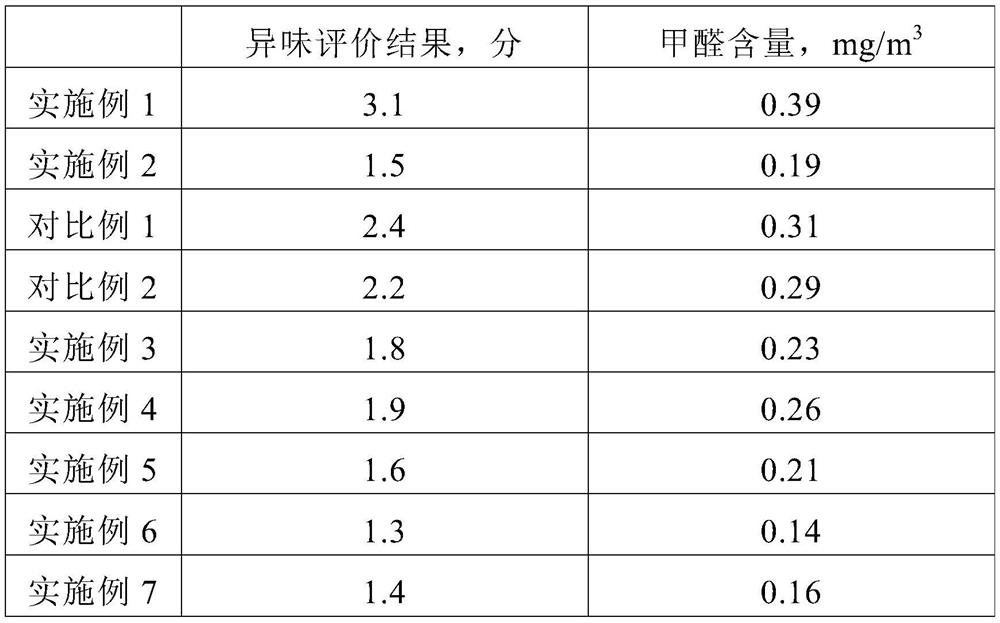A plant type indoor deodorant and preparation method thereof
A plant-based, deodorant technology, applied in separation methods, chemical instruments and methods, gas treatment, etc., can solve the problems of secondary pollution, inability to effectively absorb or remove odors, etc., to achieve removal of odor components, long-lasting action time, low cost effect
- Summary
- Abstract
- Description
- Claims
- Application Information
AI Technical Summary
Problems solved by technology
Method used
Image
Examples
Embodiment 1
[0037] Plant-type indoor deodorant raw materials (parts by weight): 8 parts of privet privet leaf extract, 3 parts of honeysuckle extract, and 75 parts of water.
[0038] The preparation method of the privet privet leaf extract comprises the following steps: take fresh privet privet leaves, wash and drain the surface water, dry at 50°C to constant weight, pulverize, and pass through a 20-mesh sieve to obtain privet privet leaves. Ligustrum privet leaf powder, privet privet leaf powder and water are mixed at a mass ratio of 1:8, refluxed at 90°C for 60 minutes, filtered with a 300-mesh filter cloth to obtain a primary filtrate and a primary filter residue, and the primary filter residue is added to the large leaf Water with 8 times the mass of privet leaf powder was refluxed at 90°C for 40 minutes, and filtered with a 300-mesh filter cloth to obtain the secondary filtrate and secondary filter residue. Concentrate under reduced pressure at 60°C until the density at 60°C is 1.08g / m...
Embodiment 2
[0042] Plant-type indoor deodorant raw materials (parts by weight): 8 parts of privet privet leaf extract, 8 parts of balsam pear extract, 6 parts of magnolia bark extract, 3 parts of honeysuckle extract, and 75 parts of water.
[0043] The preparation method of the Magnolia bark extract comprises the following steps: crush the Magnolia officinalis, pass through a 20-mesh sieve to obtain Magnolia officinalis powder, mix the Magnolia officinalis powder and an aqueous ethanol solution with a volume fraction of 60% in a mass ratio of 1:5, and use a mass ratio of Fraction is 10% sodium bicarbonate aqueous solution adjustment 7.6, reflux extraction at 65 ℃ for 120 minutes, adopt 300 order filter cloths to filter, obtain primary filtrate and primary filter residue, add the water of magnolia bark powder mass 8 times in primary filter residue, use mass fraction Adjust 7.6 for a 10% aqueous solution of sodium bicarbonate, reflux extraction at 85°C for 40 minutes, and filter with a 300-m...
Embodiment 3
[0061] It is basically the same as Embodiment 2, the only difference is:
[0062] The preparation method of the Magnolia bark extract comprises the following steps: crush the Magnolia officinalis, pass through a 20-mesh sieve to obtain Magnolia officinalis powder, mix the Magnolia officinalis powder and an aqueous ethanol solution with a volume fraction of 60% in a mass ratio of 1:5, and use a mass ratio of The sodium bicarbonate aqueous solution with a fraction of 10% is adjusted to 7.6, refluxed and extracted at 65°C for 120 minutes, and filtered with a 300-mesh filter cloth to obtain a filtrate, which is concentrated under reduced pressure at an absolute pressure of 0.02MPa and a temperature of 60°C to a density of 60°C 1.08g / mL to obtain Magnolia officinalis extract.
PUM
 Login to View More
Login to View More Abstract
Description
Claims
Application Information
 Login to View More
Login to View More - R&D
- Intellectual Property
- Life Sciences
- Materials
- Tech Scout
- Unparalleled Data Quality
- Higher Quality Content
- 60% Fewer Hallucinations
Browse by: Latest US Patents, China's latest patents, Technical Efficacy Thesaurus, Application Domain, Technology Topic, Popular Technical Reports.
© 2025 PatSnap. All rights reserved.Legal|Privacy policy|Modern Slavery Act Transparency Statement|Sitemap|About US| Contact US: help@patsnap.com


